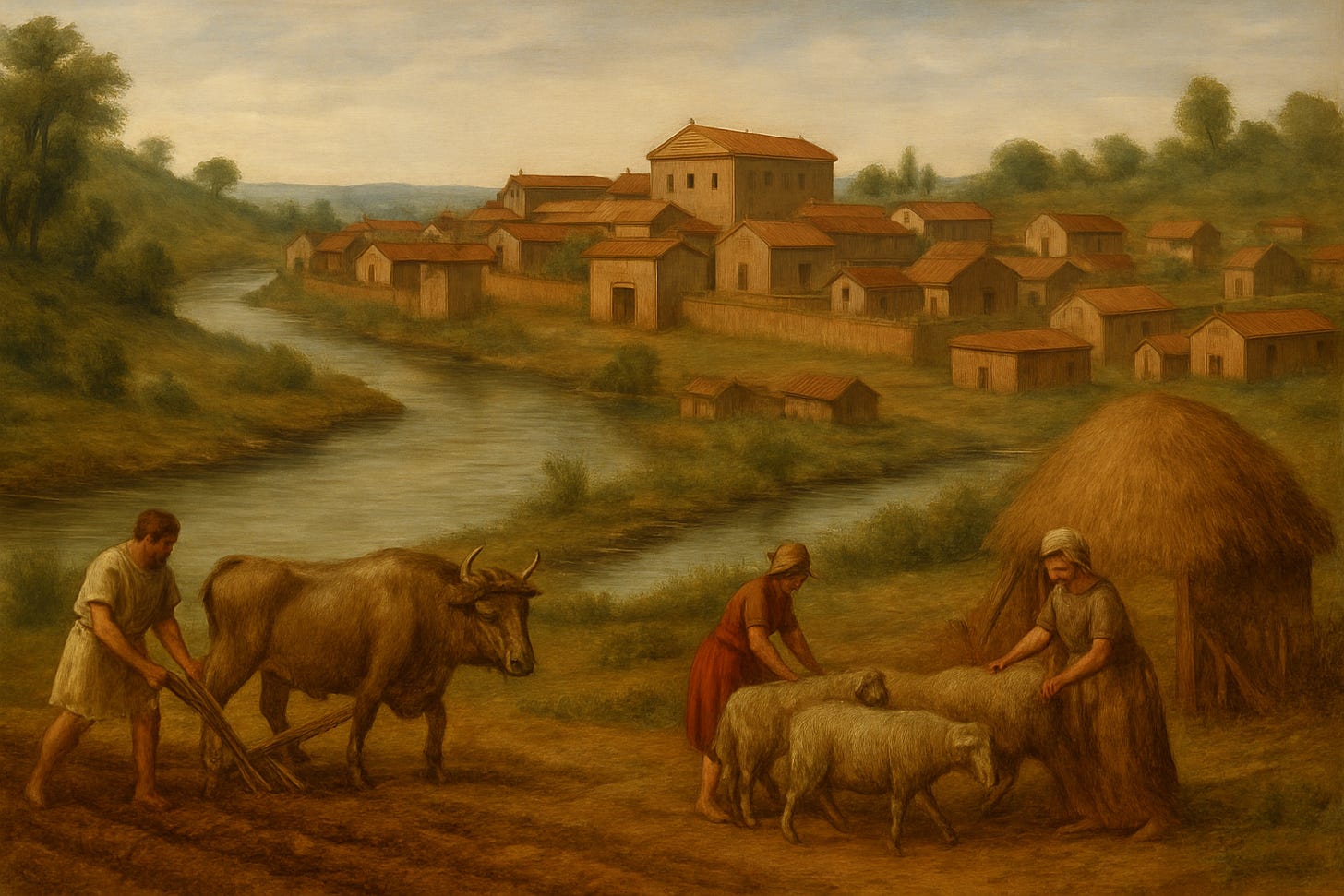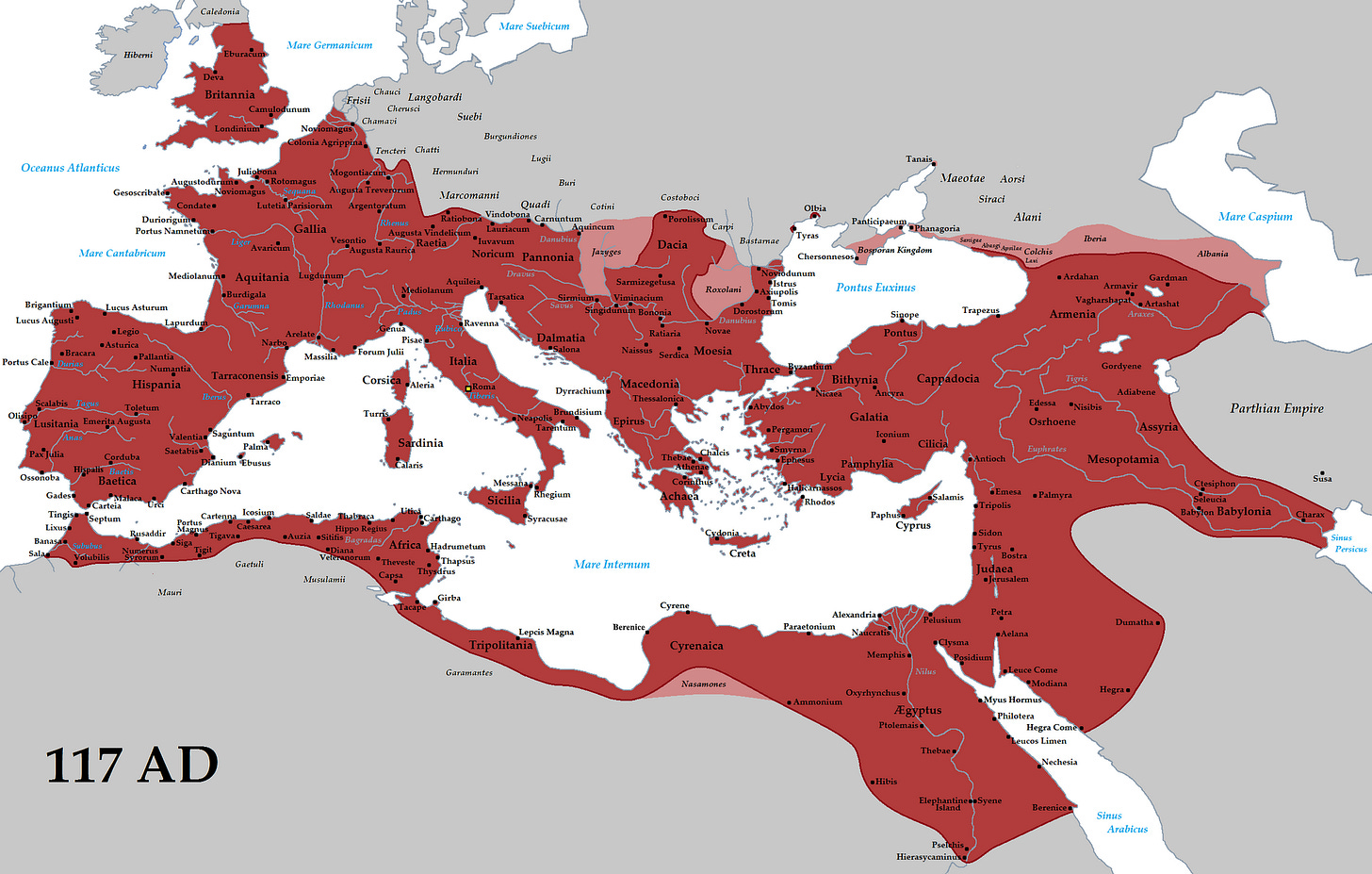The Rise of Rome: From Village to Superpower - A Brief Historiometric Analysis of Outlier Growth
Historians often describe the Roman Empire as “exceptional.” Its longevity, its influence on law, language, and infrastructure, even its spectacular collapse - all have been examined in detail. But one question has rarely been asked in a systematic way: just how exceptional was Rome compared to other great powers of history?
To appreciate that, we need to remember where Rome began: not as a sprawling state, but as a small village of herders and farmers perched on the banks of the Tiber. From those unassuming origins it grew into a polity, then a city-state, and ultimately the empire that dominated the Mediterranean world and beyond.
This essay is my first attempt to put numbers on that transformation. Using a historiometric approach - applying quantitative methods to historical data - I measure not just Rome’s peak size, but its proportional growth: the ratio between its first state-level footprint and its maximum reach in territory and population. The results suggest that Rome’s true uniqueness lay not only in how large it became, but in the extraordinary scale of its expansion. From a modest settlement, it grew thousands of times over, a statistical outlier unmatched by Persia, Alexander, the Mongols, or any of the other empires we usually place in the same conversation.
Rome around 500 BC — a modest settlement of farmers and herders along the Tiber, centuries before it became an empire.
Roman Empire in AD 117 at its greatest territorial extent, at the time of Trajan's death.



